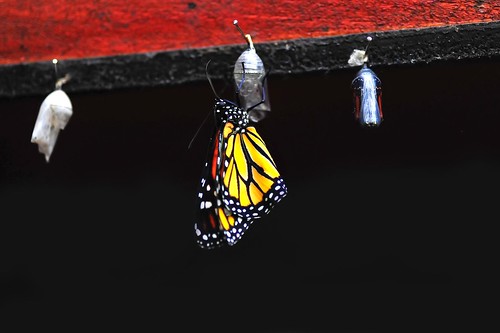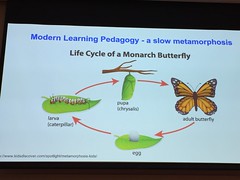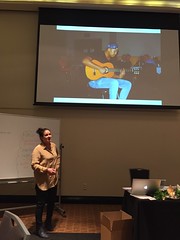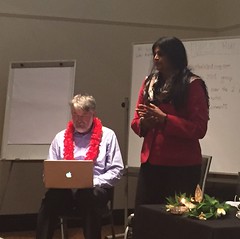 Having identified some of the features and benefits of coaching culture, one of the next considerations is designing a coaching programme. Initial discussions and decisions should involve as many stakeholders as is feasible, and will need to focus on how the design aligns with the values and requirements of the organisation.
Having identified some of the features and benefits of coaching culture, one of the next considerations is designing a coaching programme. Initial discussions and decisions should involve as many stakeholders as is feasible, and will need to focus on how the design aligns with the values and requirements of the organisation.
Ideally, the factors that will be discussed and decided on as part of the design process, include:
-
identification of outcomes for the entire programme (e.g. impact on organisation-wide behavioural change)
-
how success is going to be evaluated for the overall programme and for the individuals who participate in the programme
-
the approach (e.g. type of coaching model preferred for the organisation; level of personalisability of the programme; focus on both emotional and intellectual learning)
-
the duration
-
time commitment / frequency of sessions
-
connection with other learning initiatives in the organisation
-
people (internal and external) who will be involved (Zeus & Skiffington, 2000)
-
how coaching can fit into / connect with existing learning programmes in the organisation
-
associated change agents who will be involved in the programme
-
budgeting / approval for funding
-
ethics and protocols (especially a mutual ‘duty of care’, and confidentiality)
With my own team, which is pretty flat-structured with people already happy to challenge and support, we worked collaboratively to design a coaching programme and how it would be implemented. Before we started the process we found out more about coaching, shared experiences and resources, and brought in an external coach to work with us on a couple of occasions.
The whole team was enthusiastic and decided that the coaching programme would comprise a combination of working with their own coach with whom they would meet for an hour once a month, as well as self-paced online modules to help them develop their own coaching skills, and an online community of practice to share reflections and learning as well as ask questions / offer support. Ethics and protocols were drawn up, discussed and agreed on. We also designed a range of online templates (editable and adaptable to make them relevant to any situation) to help scaffold initial conversations, along with a check list for the first coach / coachee meeting while the coach was in training, which we shared within the team and made available to the rest of the organisation. The online modules were designed around a specific definition and approach to coaching that reflected the organisation's values and goals, as well as being multimedia rich and directly relevant to the team. Appropriate coaching models, tools and language were developed into the modules, and the activities were all designed around application in practice, reflection on practice, and learning from practice.
Alongside the coaching programme the leaders in the organisation were supportive of the creation of a respectful, non-directive, reciprocal learning and working environment based on ‘helpfulness’. They were also open to being coached (and some are considering participating in the coaching programme going forward). The team was given the opportunity to identify their own goals and aspirations, while the regular meetings with their own coach helped with motivation and accountability as well as supporting their development as a coach. Some participants also did things like print off memory joggers, and ideas of question starters they could use in specific coaching contexts, and pinned these to the wall above their desk.
Within the team the coaching approach is now so embedded it is like ‘breathing’ (Clutterbuck & Megginson, 2005). Each participant’s skills are developing, and the positive impacts are noticeable; for example, there are way more conversations around solutions, as opposed to advice giving around how to solve a problem. There is more openness to thinking through a variety of viewpoints, and this has led to (on the whole) an increase in creative (generative) collaboration and ideas, where team members feel more empowered, valued and heard. Two team members are also undertaking formal qualifications in business coaching, and everyone is committed to continuing to develop their coaching skills next year.
References
Allen, L. (2013). Tips for coaches: What to do when clients aren’t in movement. Retrieved from http://coachesfinishingschool.com/tips-for-coaches-what-to-do-when-clients-arent-in-movement/
Behavioral Coaching Institute. (2007). Establishing a coaching culture. Retrieved from http://www.1to1coachingschool.com/Coaching_Culture_in_the_workplace.htm
Charan, R., & Colvin, G. (1999). Why CEOs fail. Fortune 139(12), 68.
Clutterbuck, D., & Megginson, D. (2005). Making Coaching Work: Creating a coaching culture. London: CIPD.
Crane, T. (2005). Creating a COACHING CULTURE - today's most potent organizational change process for creating a "high-performance" culture. Business coaching worldwide ezine, 1(1). Retrieved from https://www.wabccoaches.com/bcw/2005_v1_i1/feature.html
Hay, J. (1995). Transformational Mentoring: Creating Developmental Alliances. New York, NY: McGraw-Hill Publishing Co.
Haynes, K. (2005). Ten tips for improving your coaching session. In ASTD Training and Performance Sourcebook. Mel Silberman (Ed.). Alexandria, VA: American Society for Training and Development (ASTD) Press. pp. 135-137.
Hoole, E., & Riddle, D. (2015). The Intricacies of Creating a 'Coaching Culture'. Retrieved from http://www.talentmgt.com/articles/7627-the-intricacies-of-creating-a-coaching-culture
Roesler, S. (2009). Four essential elements of a successful coaching session. Retrieved from http://www.allthingsworkplace.com/2009/05/the_four_essent.html.
Southern Institute of Technology. (n.d.) Transformational Coaching and its outcomes (Module C) [Lecture notes]. Retrieved from CBC104 (NET).
The Open Door Coaching Group. (2012). How do I build a coaching culture. Retrieved from http://www.opendoorcoaching.com.au/how-do-i-build-a-coaching-culture
Weekes, S. (2008, July). Catch on to coaching. The Edge. 28 - 32. Retrieved from http://qedcoaching.fastnet.co.uk/pdf/catch-on-to-coaching-ilm-edge-article.pdf 




























